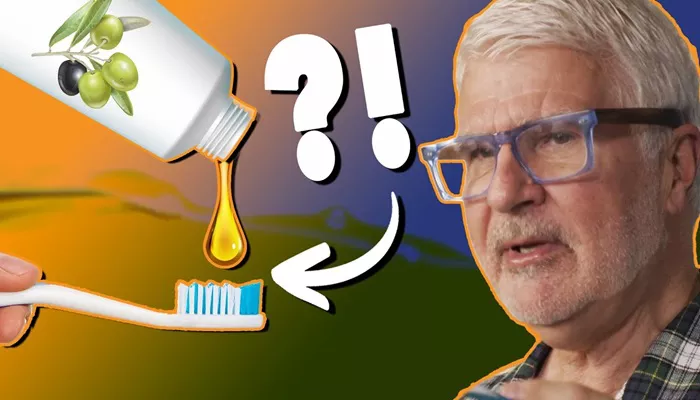A bright, white smile is often associated with good health and attractiveness. Many people seek ways to enhance their smiles, leading to a growing interest in natural teeth whitening methods. One such method that has gained attention is the use of olive oil. This article will explore how olive oil can be used to whiten teeth, detailing its benefits, methods of application, and important considerations.
Olive Oil’s Benefits for Oral Health
Olive oil is well-known for its numerous health benefits, particularly in Mediterranean diets. It is rich in monounsaturated fats, antioxidants, and vitamins that contribute to overall health. When it comes to oral health, olive oil offers several advantages:
Antimicrobial Properties: Olive oil has natural antimicrobial properties that can help reduce harmful bacteria in the mouth.
Anti-inflammatory Effects: The oil can soothe inflamed gums and reduce irritation.
Stain Removal: Olive oil may help remove surface stains from teeth due to its ability to penetrate enamel and loosen debris.
While scientific evidence supporting the effectiveness of olive oil for teeth whitening is limited, many proponents believe it can gradually improve tooth color while enhancing oral hygiene.
How to Use Olive Oil for Teeth Whitening?
There are several effective methods for using olive oil as a teeth whitening agent. Here are detailed steps for each method:
1. Oil Pulling
Oil pulling is an ancient Ayurvedic practice that involves swishing oil in your mouth to promote oral health. Here’s how to do it with olive oil:
Choose the Right Oil: Use high-quality extra virgin olive oil for the best results.
Measure the Oil: Take one tablespoon of extra virgin olive oil.
Swish the Oil: Place the oil in your mouth and swish it around for 15 to 20 minutes. Make sure to move it between your teeth and around your gums. This process helps remove plaque and bacteria while loosening surface stains.
Spit It Out: After swishing, spit the oil into a trash can (not the sink, as it can clog pipes).
Rinse Your Mouth: Rinse your mouth thoroughly with water to remove any remaining oil.
Brush Your Teeth: Finally, brush your teeth as usual. This method can be done daily or several times a week for best results.
SEE ALSO: 12 Ways to Protect Gums During Teeth Whitening at Home
2. Direct Application
If you prefer not to do oil pulling, you can apply olive oil directly to your teeth. Here’s how:
Prepare Your Toothbrush: Dip your toothbrush into a small amount of extra virgin olive oil or apply the oil directly onto the bristles.
Brush Your Teeth: Gently brush your teeth with the olive oil for about 2 minutes. Focus on areas with noticeable stains or discoloration.
Rinse and Brush Again: Rinse your mouth with water and then brush your teeth with regular toothpaste to ensure cleanliness.
This method can be performed a few times a week alongside your regular brushing routine.
3. Olive Oil and Baking Soda Paste
Combining olive oil with baking soda creates a paste that may enhance whitening effects. Follow these steps:
Create the Paste: Mix one tablespoon of extra virgin olive oil with one tablespoon of baking soda until it forms a paste.
Apply the Paste: Use a toothbrush or your finger to apply the paste directly onto your teeth.
Leave It On: Allow the paste to sit on your teeth for about 5 minutes.
This allows the baking soda’s mild abrasiveness to help lift stains while the olive oil nourishes enamel.
Rinse Thoroughly: Rinse your mouth well with water after removing the paste.
Brush Your Teeth: Brush your teeth with regular toothpaste afterward.
Use this method once or twice a week for optimal results.
Important Considerations
While using olive oil as a natural teeth whitening method has potential benefits, there are some important considerations:
Consult Your Dentist: Before starting any new oral health regimen, consult with your dentist. They can provide personalized advice based on your dental health needs.
Be Patient: Natural methods like olive oil may take time to show results. Consistency is key; you may need several weeks of regular use before noticing significant changes in tooth color.
Maintain Good Oral Hygiene: Olive oil should not replace regular brushing and flossing. Continue practicing good oral hygiene habits alongside these methods for optimal dental health.
Monitor Sensitivity: If you experience any sensitivity or discomfort while using olive oil, discontinue use and consult your dentist.
Conclusion
Olive oil presents an intriguing natural option for those looking to whiten their teeth while promoting overall oral health.
Through methods like oil pulling, direct application, or creating a paste with baking soda, individuals can incorporate this beneficial substance into their dental care routine. Although scientific evidence on its effectiveness remains limited, many users report positive results over time.

